One of the great strengths of mega-successful Pixar Animation Studios is its willingness to let its artists tell very personal stories. Pete Docter based his Oscar-winning Inside Out on the sudden change in his ebullient young daughter’s personality as she began to mature. Domee Shi’s Oscar-lauded 2018 short Bao was inspired by her memories of being like “an overprotected little steamed bun” as an only child. And Bobby Rubio’s lovely Disney+ “SparkShort” Float is a metaphorical tale of the challenges faced by his autistic son.
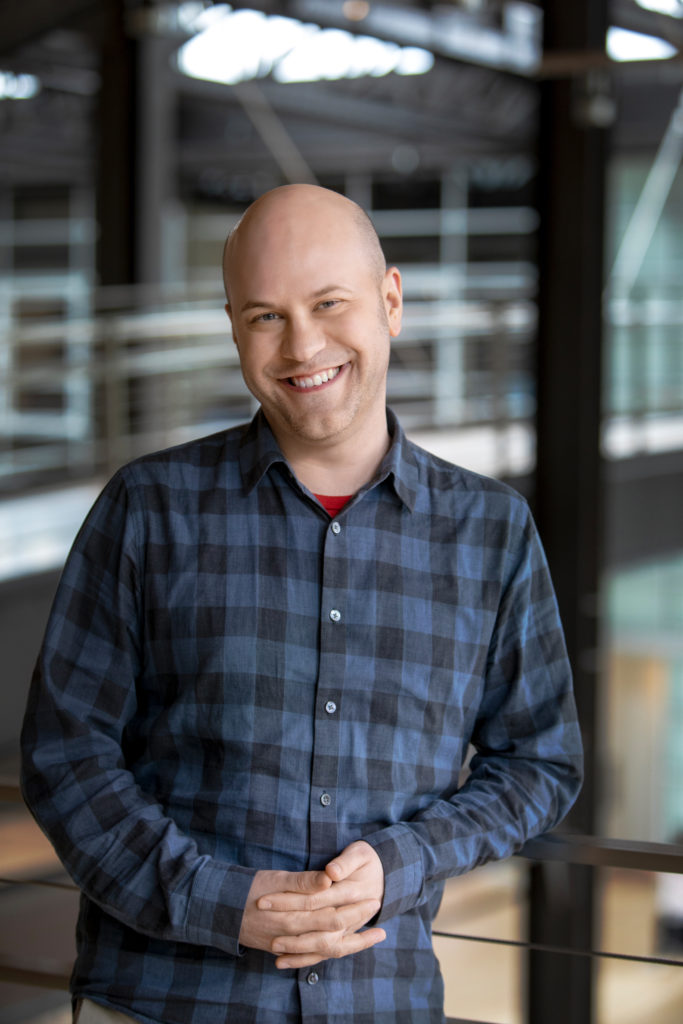
Pixar’s latest feature, Onward, also has deep meaning for its director, Dan Scanlon (Monsters University). “In development, I knew I wanted to do something personal this time. And so I just started asking questions of other filmmakers here and telling them about my life. And they helped me pull out
certain personal things. My dad passed away when I was a year old and my brother was three. So that was a biggie. I think a lot of times movies are questions or should start off as questions. And my question was, who was he and how am I like him? Where am I going? That’s where the idea came from and we thought, well, wouldn’t it be amazing if you had one day with that person—and what would you say?”
To make that premise work, some kind of magic would need to enter the picture. But Scanlon didn’t want to make a period piece set in a fantasy world. “And then I thought, why can’t it be modern and be a fantasy, magical place?”
Thus was born the world of Onward, in which high-tech conveniences have been so embraced by its community of elves, sprites, centaurs, trolls, gnomes, and other fanciful creatures that they’ve let some of their magical powers dissipate. At the center of the story are two elf brothers, awkward Ian (voiced by current Spider-Man Tom Holland) and his boisterous older sibling, Barley (Chris Pratt). On his 16th birthday, Ian is presented with a gift from the late father he never knew: a letter containing a magic spell, plus a staff and a special gemstone, which will give him the power to resurrect his dad for one day. But the spell goes terribly awry: Dad comes back, all right, but only from the waist down. To complete the process, Ian and Barley must embark on a frantic quest to find another gem within the next 24 hours.
Scanlon says, “It’s great that Pixar wants to tell personal stories, or at least stories that start off with a seed of truth and honesty and then maybe are dramatized after that. If something has happened to you and you have real questions about it, chances are other people are going to have similar questions, even if they don’t have the same story. I like to believe that’s why a lot of the Pixar stories have endured the test of time.”
Four months before Onward’s opening date on March 6, Boxoffice was invited to visit the Pixar campus in Emeryville, California, preview some scenes from the film, and hear from an array of Onward’s enthusiastic craftspeople about their contributions to the project. It’s a handsome and convivial complex, with the company’s many Oscars and other awards proudly on display and life-size (and beyond) replicas of their most beloved characters (The Incredibles, Buzz and Woody, etc.) poised near the entrance.
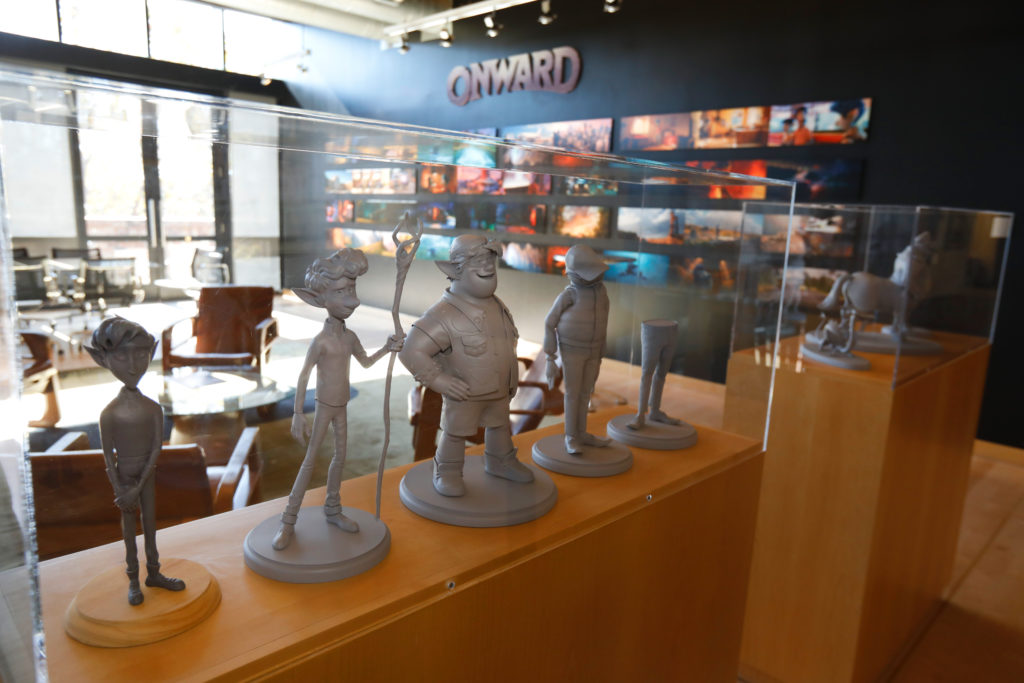
During a Q&A session, Scanlon talked about the challenge of working with so many gifted collaborators. “If anything makes it really, really hard, it’s that everyone here is very smart and great filmmakers and I respect their opinions. And that makes it difficult to make a choice. … We’ve got five, six years to make these films, but there’s always a gate closing. You check these different ideas against [one another], and then you say, all right, we’re going to go with this—until we’re not.”
Producer Kori Rae added, “It’s amazing how open Dan and everyone is during the process, because we really just want to make the best choices for the film. … All we do all day long is make choices and decisions and try to move everything forward. … But if anybody is questioning any decision that we make, we encourage them to come and talk to us about it.”
Disney and Pixar arranged four sessions with the heads of various departments, revealing how incredibly detailed and meticulous the process of developing and nurturing an animated feature is.
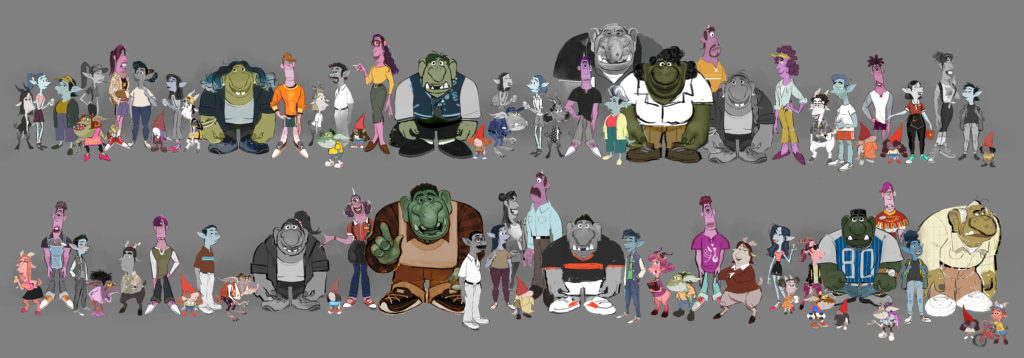
Character supervisor Jeremie Talbot seemed to relish the challenge of creating a brand-new world filled with wild characters—the final count was 13 species, 240 characters, and 100 variants—and building something more subtle from concepts that were initially “too simple, too graphic.” Character-shading lead Ana Lacaze talked about the intricacies of her work (How shiny? How soft?) and how she applied patterns and elements that represented fantasy and “a touch of whimsy.”
Directing animator Allison Rutland, who oversaw a team of 85 animators, noted how “every character had a history that influenced how they evolved.” One of the most fascinating is the manticore—part human, part lion, part bat, part scorpion—played by Octavia Spencer. This fierce creature is now the harried manager of a family-style restaurant, and Rutland wanted to make sure that even though she wears tight clothes and high heels, “inside she’s still a great beast,” about to be liberated. For another character, a centaur whose upper half is an overweight cop, the Pixar team watched reference footage of a horse brought inside a room and wreaking havoc.
As for Dad, “It was an incredibly fun challenge to have a character who’s just a pair of pants. How do you express emotions?” Rutland said. By trial and error, her team found a way to make his walk communicate surprise and apprehension.
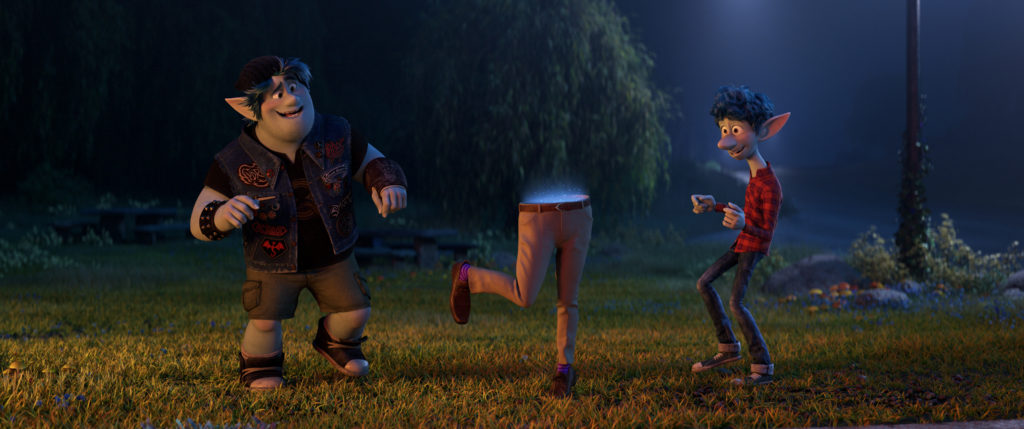
Crowd supervisor Sequoia Blankenship proved the value of his department, showing how animated background extras enrich the action. One sequence that cries out for the big screen has an army of biker sprites taking over a convenience store—each one earns a laugh, if you’re quick enough to spot them. Blankenship joined in the praise for director Scanlon: “Dan is a really collaborative and generous director who allows the artists to bring something to the table and have their own voice.”
In another session, a quartet of speakers addressed the challenges of refining Onward’s particular blend of fantasy and contemporary reality. For production designer Noah Klocek, it was a matter of building “a visual language that helps the audience accept that world.” Originally, painters from heartland America, like Grant Wood, were a touchstone, but the artists ultimately opted for a setting more like Los Angeles. The general ratio the designers arrived at was 70 percent familiar and 30 percent fantasy. “We had to massage almost every shot” to maintain the right balance, Klocek revealed.
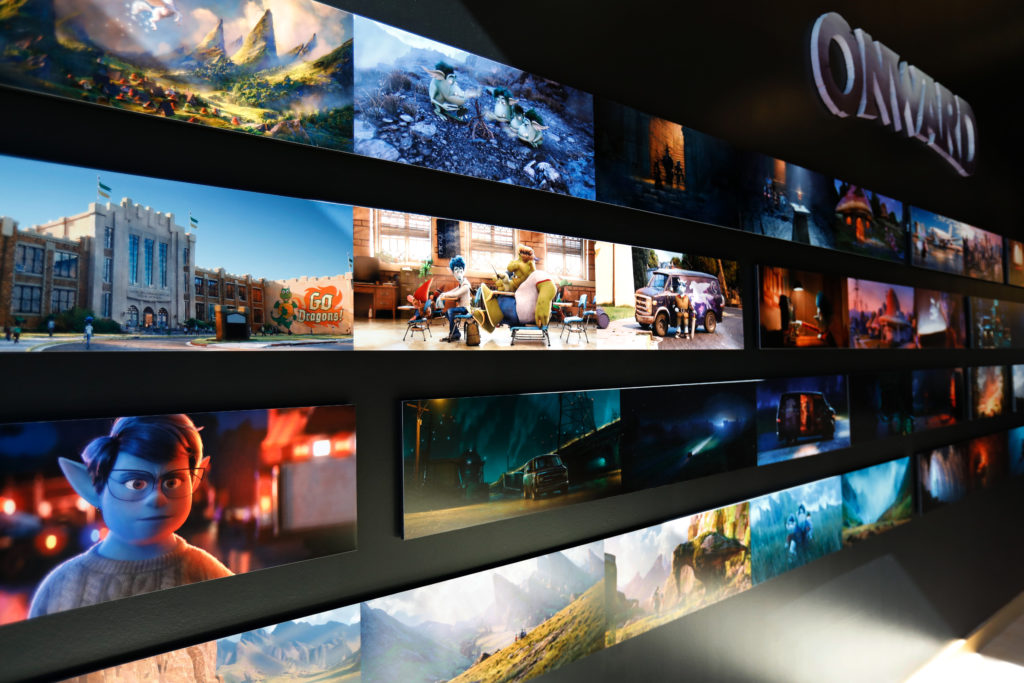
Adam Habib, director of photography/lighting, described how he developed different camera styles for each brother (e.g., a wider lens for the manic Barley) and how “the emotion of each moment guides the camera choices”—including simulated handheld for the movie’s most chaotic scenes.
Editor Catherine Apple said she was on the project for four years through its many stages, from temp dialogue tracks to sound effects to temp music score and on to the final score. And lighting supervisor Jonathan Pytko displayed a big board with a small image of every single shot, to demonstrate how the emotional arcs of the story are subtly communicated through color and lighting. Pytko’s biggest challenge: “Blue skin is difficult to make appealing.”
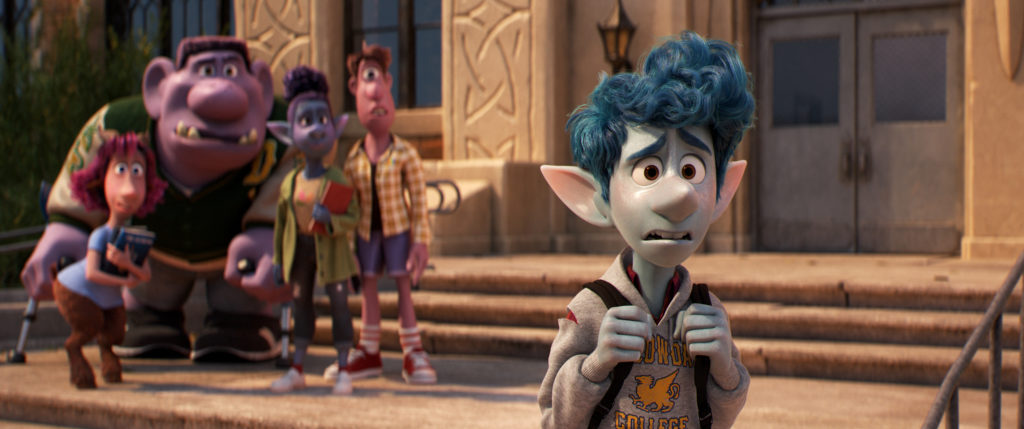
Our third session kicked off with story artist Louise Smythe revealing how the various spells uttered in the movie were a team effort fueled by word-association games. Effects supervisor Vincent Serritella explained how those spells took up varying amounts of screen space depending on their potency. And graphic art director Paul Conrad tallied the overwhelming design details that go into a fantasy project like this, from whimsical grocery products to highway signs to rock-band logos. Even the Quests of Yore adventure guide book the brothers use is designed to the last detail.
The final session was led by story supervisor Kelsey Mann and story lead Madeline Sharafian. Mann shared a photo of himself with a single index card tacked to the wall on Onward’s first day of pre-production—in 2013. “The reason it takes so long is we have such a high bar at Pixar,” he said. “We make sure the story is not just good, but great. We start in a very scary place, which is an empty story room. And we don’t start making the film till the last year, year and a half.”
Eventually, the rough script is sent over to story artists. Over the course of production, according to Mann, there will be about eight screenings of various storyboarded scenes, with 35 to 40 scenes per screening. “It’s a bit like a play,” Mann said. “We’re trying to give everybody in the room the sense that they’re watching a movie. Is the scene good? Is it doing what it needs to do?” To give a sense of the atmosphere, Sharafian used animated storyboards while performing a key sequence involving an invisible “trust bridge.” (The press was later invited to cross the vertiginous trust bridge by donning virtual-reality helmets.)
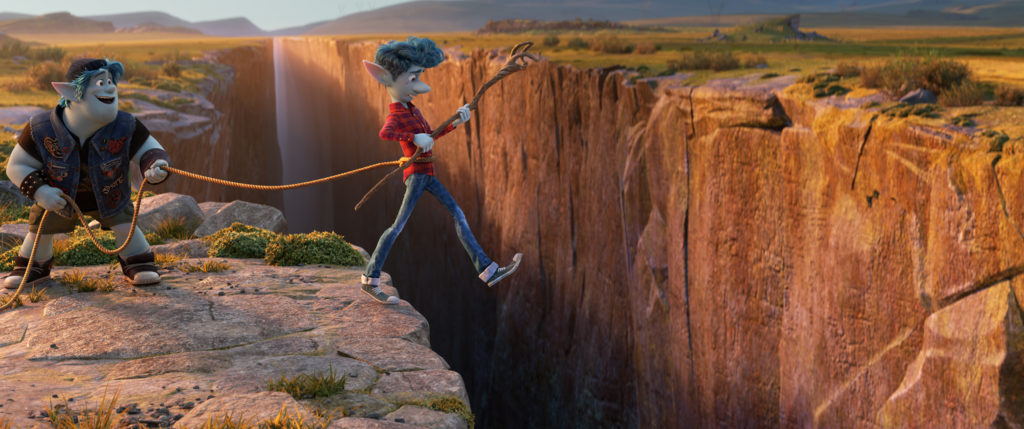
A Pixar tradition is the gathering of the “brain trust,” a group of the studio’s top artists. “Each one of these filmmakers has their own thing they’re doing,” Mann said, “and for one day they stop what they’re doing and help each other on their film.”
In a one-on-one interview later in the day, director Scanlon reflected on the lengthy process. “You start very alone, and then you build this wonderful crew that would die for the film, and you’d die for them. Three hundred people, and now you lose them all and you’re alone again. We’ve got a few folks still around, but that’s the emotional journey. You just think, wow, we were such a team and everyone worked so hard and everyone sacrificed time with their families, and now they all go to the wind and you’re back alone again. It’s emotional. We’re all really proud of the film, but you miss people. And you’re tired.”
Along with the many artisans who craft a Pixar feature, the voice actors are also an important component. “This was a challenging film, because we had a 16-year-old and a 19-year-old,” said producer Rae. “What age actor do you try to go out to? You want someone with solid acting chops, but someone who still sounds 16. The process was lengthy, and we designed the characters first. It’s not until we get closer to the actual start of production that we really aim to start recording them. Finding Tom Holland was fantastic. It took a little while for us, but once we met with him, and then cut in some test dialogue from his other films, we realized that he was just right for Ian, that he had the right amount of nervousness and shyness and yet is such a great actor that he can really do the emotional scenes. We needed actors who could both do comedy and the emotional scenes.”
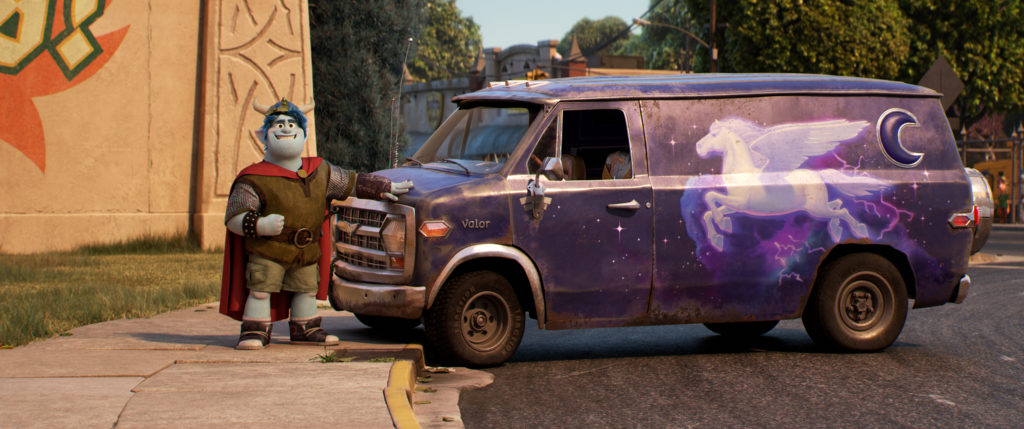
Scanlon added, “And then Chris [Pratt] came after that, and everyone was saying Star-Lord and Spider-Man. We really didn’t give that a lot of thought. It was just that Chris embodied the chaotic, wild part of Barley and also that he has a charm that allows him to get away with being a little annoying, which he has to be at times, and he has that big-brother quality. It does help that they do know each other. That Chris is a little bit like a big brother to Tom helped a lot.”
In a change of pace from her self-absorbed TV characters Elaine Benes and Selina Meyer, Julia Louis-Dreyfus plays the nurturing mother to the two teens. “The reason we chose Julia was for her sardonic side, the humor side, the idea that she’s had a terrible thing happen in her life and she’s had to raise these two boys alone,” Scanlon explained. “And from my mom that sort of showed up in a don’t-sweat-the-small-things kind of sense of humor. And Julia has that in spades, where she rolls her eyes at things and moves on, commenting on all the idiots around her. That was the initial choice. But I didn’t think about how much of the movie is gentle and sweet. You know, she’s a mother of two boys herself, and she didn’t put any jokes into it. She just was sincere and sweet. Being able to see her switch back and forth is really cool, and I think it will be something people haven’t seen much from her.”
In casting Octavia Spencer as the formidable manticore named Corey, Scanlon said they found an actress with the range to be both flustered and vulnerable and “almost Shakespearean.” Rae added, “When she first saw the character design, she laughed and she kept chuckling.”
Pixar is known for setting itself technical challenges, from its very first miracle of a feature, Toy Story, in 1995. For Scanlon, the big challenge of Onward was “the amount of varied species in the movie—different walking styles and slithering styles and all of that. It’s difficult to populate a movie with this many characters—just the size of the world when doing a fantasy movie of this scope. And also a movie where they’re in a van traveling down the road—it’s a road picture, and they have to traverse a lot of different areas.”
“The colliding of the worlds, the modern fantasy, just tracking that and making sure it all made sense was a bit of a challenge from a pure story standpoint,” Rae added.
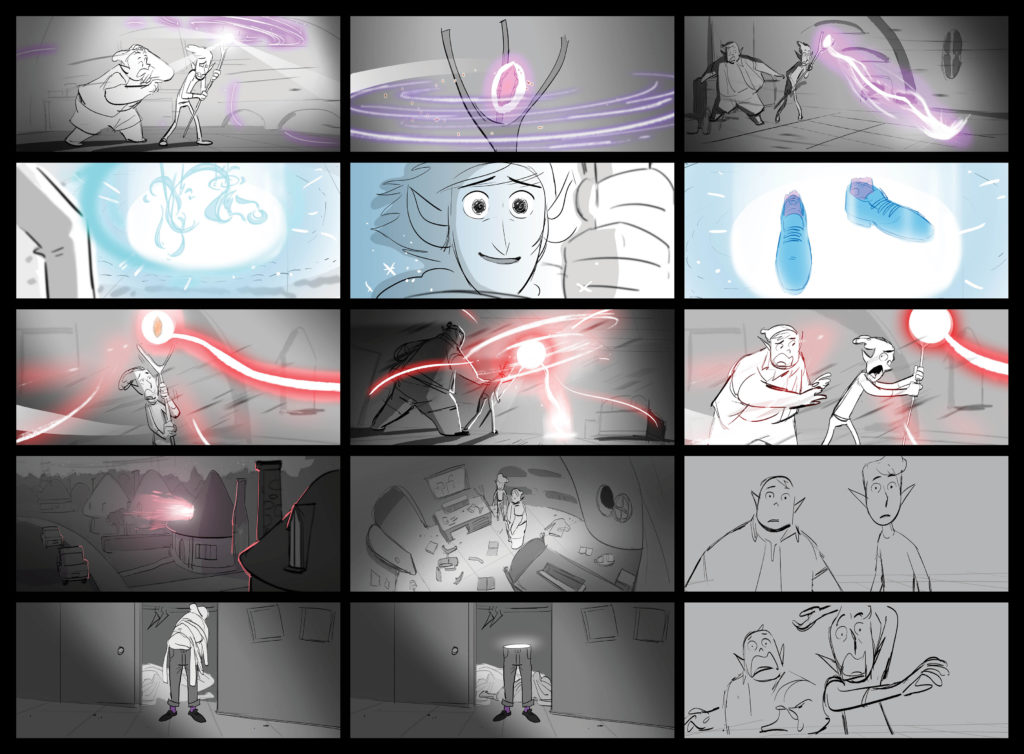
With all the painstaking detail that goes into a project like this, does it bother the filmmakers that some people will wind up watching Onward on their small screens?
“It used to bug me a lot more,” Rae responded.
“It doesn’t bug me anymore at all. I’m just glad they’re watching it,” Scalon said.
“Exactly. Now we understand; we’ve accepted that that is what’s going to happen. I just hope as many people see it as possible, whether they’re watching it on a phone or an iPad or in a theater.”
Added Scanlon, “I think they’ll get the best experience from a theater. Especially for this movie, because it’s a quest movie, and it’s big and dense. But, hey, I get it. I watch things on the phone because that’s all I have time for.”
With Onward finally about to hit screens, Scanlon and Rae are currently decompressing. But, said Rae, “probably [in the coming year] there’ll be another photo of us that says day one, in a blank room with white walls and no ideas. The same card that we had at the beginning of this one.”

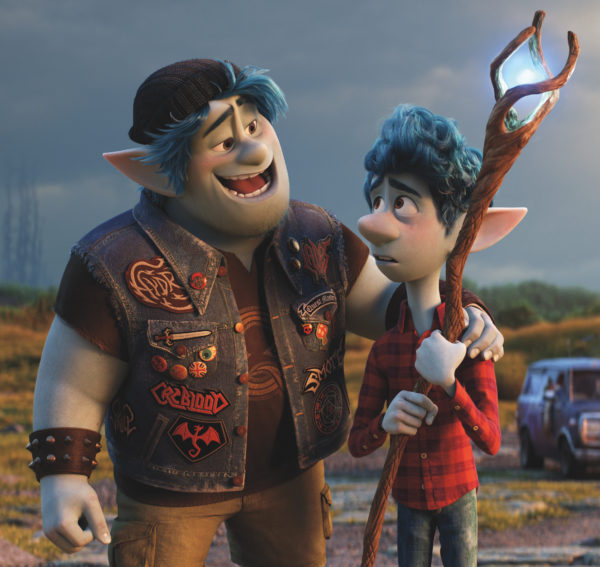

Share this post